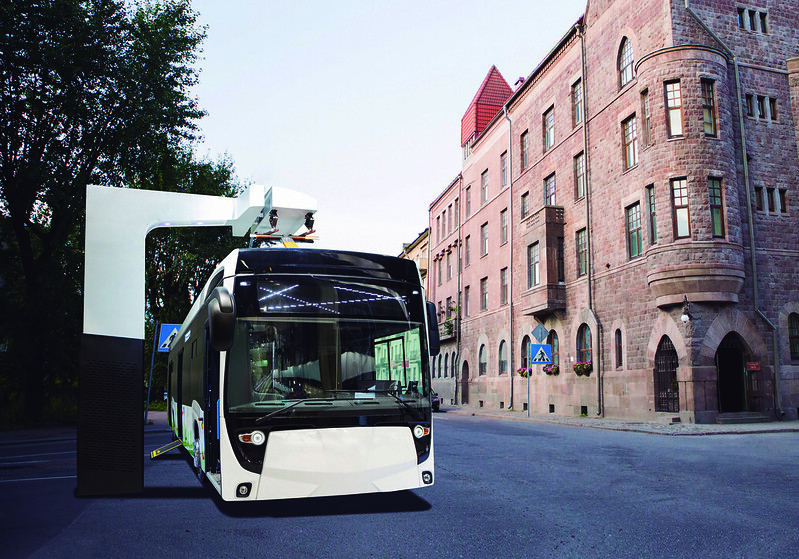
Nov 12, 2020
Report on electromobility sustainability
Yesterday was launched the report “Sustainable electromobility – what is required for electric road transport to be environmentally and socially sustainable? ” written by IVL Swedish Environmental Research Institute on behalf of the World Wide Fund for Nature, WWF Sweden.
Rapid electrification of the transport sector is crucial to reach both the Swedish and the global climate goals. Sales of electric vehicles, especially passenger cars, are also expected to increase exponentially in the coming years, representing a significant part of the car fleet as early as 2030. But electrification also comes with challenges. Several issues related to the impact on the environment, the climate or the working conditions and human rights are raised. Depsite these, the sustainability aspects are are the prominent ones associated to batteries.
The report describes a number of environmental and social sustainability aspects that are important to deal with in order for the transition to an electrified transport sector to take place both at a fast pace and in a sustainable way. The report provides recommendations to both policy and business on what is required for sustainable electrification of road transport. Whereas the full report is available in Swedish, IVL also provides a summary in English, relayed below.
Summary
IVL Swedish Environmental Research Institute has, on behalf of the World Wide Fund for Nature, WWF Sweden, made this overview of the prerequisites and possibilities for achieving sustainable electrification of the road transport sector. The study is based on a multi-criteria analysis on various sustainability aspects for electric vehicles, energy carriers and infrastructure. Aspects are described for different steps in the value chain for the production and use of vehicles. The analysis addresses the following aspects:
- Working conditions and human rights
- Environmental and health-related emissions and noise
- Fire, accidents and leaks, risks of radioactive impact and concerns about electromagnetic fields
- Exploitation and utilization of natural environments, landscapes, cultural environments and buildings
- Use of natural resources and materials
- Re-use and recycling of components and materials in vehicles, peripherals and infrastructure
- Energy use and greenhouse gas emissions
- Energy efficiency of various technologies
- Land use for roads, infrastructure, power plants, production facilities and distributional systems
- The impact of traffic on urban environments, cultural environments, landscapes, coastal environments, etc.
- Traffic accidents and congestion
- Transport of materials, products and waste to and from production plants
Based on the multi-criteria analysis, different sustainability aspects and possible measures are described. The analysis results in the following recommendations to some important stakeholders:
National Parliament, the Government and municipalities
The government should introduce legislation that requires social responsibility in the supply chains. The national parliament of Sweden should monitor the revision of the EU directive on vehicle recycling in order to stimulate a high grade of recycling and an efficient system of circular flows of materials. The government also needs to continue to support the expansion of certain public charging that is of strategic importance, for example in locations where commercial actors find it difficult to establish charging points.
The government should investigate the possibility to require some form of consumer information about plug-in hybrid passenger cars so that the customers are given the opportunity to compare electric consumption in electric mode, the range with electric power, and gasoline or diesel consumption in combustion mode. The government should also explore the possibility of introducing a differentiated congestion tax for electric commercial vehicles. The government should also set up a study on distance-based vehicle tax for light and heavy vehicles, which shall take into concern the fact that electric-powered vehicles have great environmental benefits and that the societal costs from road traffic are higher in urban areas than in rural areas. The rules for Swedish Environmental zone class 3 permitting only electric and biogas-fuelled vehicles should be adjusted so it will be possible for municipalities to regulate light and heavy vehicles separately. Municipalities with the right conditions can prepare a gradual introduction of environmental zone class 3 in suitable areas.
Automotive industry and battery manufacturers
The manufacturing industry of cars and batteries should strive to develop products with a high degree of elements that are common on Earth, and with a low content of rare and conflict-related substances. They need to identify critical production phases or critical products, and they need to have routines that can ensure human rights and prevent child labor. This applies to the entire production chain and therefore requires a high degree of collaboration with actors at various stages of the value chain. The products need to be designed in a way that facilitates second life and recycling, and that minimizes the content of critical or conflict-related substances. Efforts should also be made to use recycled materials where it is environmentally and technically motivated and possible.
Vehicle manufacturers can also help their customers to set ambitious environmental requirements and choose vehicles that drive the market towards a sustainable direction, by being transparent and declaring the content of critical or toxic substances in their products, their climate impact, and the expected life-span of vehicles and batteries.
Buyers of vehicles
In situations when companies or individuals purchase an electric vehicle, they should avoid vehicles with larger batteries than the use requires. This should be taken into account in order to reduce the climate impact from production, and the use of critical materials. Energy efficient models should also be chosen, as all energy use, also renewable energy, can have an impact on health and the environment.
Vehicle buyers should also demand from vehicle retailers that they should be able to provide documentation that makes it possible to compare the environmental performance and climate impact of different models in a life cycle perspective. You can also ask questions about the manufacturer strategies to ensure a good recovery of vehicles, batteries and important materials.
When purchasing a plug-in hybrid passenger car, customers can choose a model that consume as little fuel as possible when battery is low, and the car is driven with an internal combustion engine. When charging, car users can use climate-neutral electricity, if possible, from a supplier that is third-party certified.
Employers should not subsidize the employees’ driving or parking with tax-benefit cars, with the argument that they are electrically powered and thus environmentally friendly. Electric vehicles also contribute to congestion and increased need for road infrastructure. In addition, this type of subsidy creates increased competition with traveling by public transport, by bicycle and walking, all of which are more space efficient and less polluting than car travels.
Buyers of transport services
Companies that buy transport services can demand that their suppliers use electrified vehicles in procurement and business agreements. They can demand that transport service providers have implemented systems that ensure environmental and social care, and that the carriers in their turn have similar requirements on their subcontractors.
Transport buyers also need to show that they have a willingness to pay for environmentally adapted and social responsibility when purchasing transport services.
Public transport operators
The contractors of public transport can gradually increase the share of electric powered buses. They can also demand that the contracted transport companies are able to show environmental product declarations or similar documentation that fulfil certain environmental performance of the vehicles used.
Environmental and human-right organizations
Non-governmental organizations can push for governments to develop regulations and requirements on producers to take responsibility for environmental and human rights issues at all stages of production. Experiences from similar work in other product areas can be used to influence the design of management systems that can be used by key stakeholders in electromobility.
More EBA250 news
InnoEnergy, the driving force behind the EBA250 initiative, introduces today its new brand identity,…
The new EU-funded facility will enhance global raw materials partnerships and access to Critical…
Last week, InnoEnergy and EBA250 represented the battery value chain in Brussels alongside Verkor…
ElevenEs, a European LFP lithium-ion battery manufacturer, has signed a Joint Development Agreement with…
The European battery industry has come a long way since the launch of the…
The 2024 Innovation Fund calls for proposals have been launched this week, with a…
Altris, a pioneering Swedish developer of sodium-ion battery technology, has reached significant milestones that…
Last Friday, Morrow Batteries officially inaugurated the first giga-scale LFP (Lithium Iron Phosphate) cell…
On May 24, 2024, the 8th High-Level Meeting of the European Battery Alliance (EBA)…
Following the recent announcement from EVP Šefčovič on the need to support manufacturing of…









